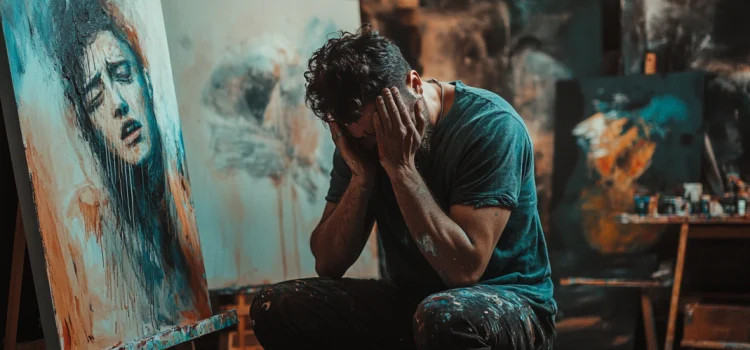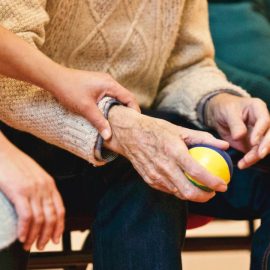

This article is an excerpt from the Shortform book guide to "Wired to Create" by Scott Barry Kaufman and Carolyn Gregoire. Shortform has the world's best summaries and analyses of books you should be reading.
Like this article? Sign up for a free trial here.
What is creative resilience? Is the trope of the tortured artist real? Why is growth after trauma so important?
We’ve all heard of the “tortured artist” trope, but as it turns out, there’s some truth to the phrase. According to Wired to Create, an important characteristic of creatives is the ability to turn their trauma into art.
Continue reading to learn how suffering can be meaningful.
Creative Resilience
A characteristic that the authors of Wired to Create say creative people share is creative resilience—feeling their emotions intensely, using them to develop a deeper understanding of themselves and the world, and then sharing the insights they’ve gained through creative expression.
The authors explain that many artists use creative expression as a way of releasing pain and suffering. Turning pain into art, for example, helps creatives cope because it makes their suffering meaningful. Sharing their experiences is also cathartic because it allows creatives to connect with others—it makes them feel less alone in their experiences and produces the same effect for those viewing their art.
This characteristic is closely linked to sensitivity. Because creatives are so sensitive, they’re more likely to be heavily impacted by traumatic experiences and carry suffering in the form of mental and emotional disorders. However, being creatively resilient allows creatives, distinctly, to flourish in the face of this adversity.
| Does Creative Expression Actually Relieve Suffering for the “Tortured Artist”? The link between heightened sensitivity, suffering, and creativity that the authors discuss is also the foundation of the tortured artist trope. While many artists do cite their art as a way of expressing their pain, it’s important to note that in many cases, heightened sensitivity and suffering do not lead to increased creativity. For example, depression, a common result of heightened sensitivity and cause of suffering, actually shrinks parts of the brain linked to learning, memory, processing, and consequently, creativity. Further, not all “tortured artists” are able to turn their pain into art and healing. For example, a Swedish study found in 2012 that writers were 121% more likely to be bipolar and 50% more likely to commit suicide—despite engaging in creative expression (writing), they still experienced mental illness that led some to self-harm. Further, a 2018 study on creatives found that 60% had suicidal thoughts. |
The authors add that this phenomenon—turning suffering into meaning and growth—has been scientifically observed and labeled “post-traumatic growth.” One study found that more than half of the people who experienced trauma in their sample group reported significant mental or emotional growth.
However, researchers say that for growth to occur after trauma, the traumatic experience must 1) deeply challenge the person’s previously held beliefs about the world and themselves, and 2) cause them to rewrite their perspectives and develop new insights. As we’ve discussed, these insights are often the fodder for creative expression.
(Shortform note: The phenomenon of post-traumatic growth (PTG) is becoming a more common topic of psychological research. Studies agree on the conditions necessary for PTG to take place, and add that PTG is measured by a positive response in five areas: 1) appreciation of life, 2) relationships with others, 3) new possibilities in life, 4) personal strength, and 5) spiritual change. Further, researchers say there are two traits that are more heavily linked to PTG: openness to experience and extroversion.)

———End of Preview———
Like what you just read? Read the rest of the world's best book summary and analysis of Scott Barry Kaufman and Carolyn Gregoire's "Wired to Create" at Shortform.
Here's what you'll find in our full Wired to Create summary:
- What creativity truly means—and why it’s hard to define
- The 10 characteristics of creative people
- How to maximize your creative potential






